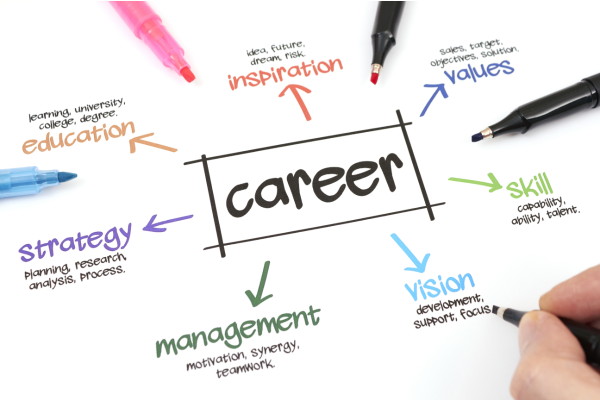Comments (0)
PLC Newsletter: Leading through Change: 3 Essential Elements for Your Toolkit
Change fatigue is real. And we know that change is one of life’s certainties. We navigated it pre-pandemic in a way that worked for us or not. And now that we are living with change post-pandemic – whether we are choosing when and how we want to work or where we want to live or figuring out how we co-exist with AI – we are more conscious of the fact that we need more tools in our “change tool kit.”
In the past, when I thought about navigating change, I would think, “What do I need to DO to go over, around or through this challenge?” And then I would either do something or not. When I acted, I was clear and confident that the action I took would move me forward, closer to my desired outcome. When I did not take action, I was unclear and less confident – uncertain – about the path ahead. Specifically, I lacked mental readiness to move forward.
Here are some insights and practical tips to help you lead yourself and others through change in your workplace, specifically, and in your life, generally.
Understand and Evaluate How You Feel About the Change
Several years ago I was in a work environment that was not ideal for me. When I got in my car to drive to the office every day, my gut would contract like a fist. Stress consumed my being and manifested itself in my body in many other ways…I’ll spare you the details. Because my physical reaction was so extreme, that marked the beginning of my awakening around the power of the mind-body connection.
Fast forward several years and you’ll find me talking each and every day about understanding and evaluating our emotions and feelings. The foundation of emotional intelligence – the understanding of self (intrapersonal) – begins with self-awareness, understanding your triggers and motivations. We have been navigating change all of our lives and we each feel some kind of way about it, depending on when and how it shows up. To pretend like we don’t have a relationship with change, positive, neutral or negative, isn’t going to serve us today or in the future. I propose the following to increase change readiness:
1. Take a moment (or two or three) to actually stop and think about how you feel about the change. Come up with an actual feeling word. “Good, great, fine, well, okay” are off limits.
a) Would you characterize the feeling word as positive or negative? If so, what does that tell you?
b) What might be the source of that feeling? Have you been through a similar situation and got a result that you didn’t want or is the situation new to you?
c) If a similar situation occurred, what did you learn? What did it take to win and/or what would you have wanted to get to an optimal result?
2. Get clear about why the change is important to you.
a) What will it enable you or your team to achieve?
b) How will you define success if/when the change is implemented?
3. Think about how you would feel if the change were successful. Come up with an actual feeling word.
a) What might you need to get there? People? Resources? Time?
Once you get clear on your current and desired future state feelings, move into the information stage.

Analyze and Evaluate the Information Available to You
Lack of clarity around available information reduces confidence when making decisions. And there is no such thing as perfect information. At any given moment, there will always be information known and unknown to us. What matters is that we identify the information that we have and the information that we lack, then analyze the relative importance of that information based on what we want to achieve. This is the time to gather evidence, state assumptions and identify whether the information gaps need to be closed or not. Once that process is complete, then it is time to evaluate whether the information at hand is sufficient to make an optimal decision regarding how to move forward. The foundation of the aforementioned thought process is based on the Johari Window model. It has been my “go to” for several years.
What I know to be true about humans – in the absence of information, people make stuff up. And what we make up is always more doomsday because our brains have a negativity bias. So while we can go through the exercise of determining, “What’s the worst that could happen?” We can also think about the possibilities – aka, the rewards – that could open up as a result of navigating through change. If you are always focused on the former and don’t make space for the latter, that is a major gap. The actual definition of risk is neutral – there is an upside and a downside.
A major element within this information gathering process is this – you may need to phone a friend or colleague(s) to gain insight and perspective, especially if the change impacts multiple people/stakeholders. The information you seek quite possibly, or even probably, lives with other people. You don’t exist in a vacuum, so don’t put yourself in one.
Evaluate and Apply Your Approach
What is one action you can take to feel more confidence about how you are approaching the shifts happening around you? Consider what is important to you and why, what is an ideal outcome and how you will measure your success. Think about who you need to solicit input from to gain additional information and insight.
Once you take that bold step forward and put your plan into action, you will continue to receive new information and clarify existing information. Some of that information may be external. Know that you can iterate as you learn. Some of the information may be internal, meaning, how you feel about the actions you are taking may vacillate. Pause, reflect, evaluate. Are your feelings valid or are you making stuff up? Seek evidence. Seek outside perspectives.
Want support thinking through this challenge? I am happy to hop on a call to help you unpack it and identify a solid next step. BOOK A 20-MINUTE CALL
Final Thought
There is no one size fits all approach to navigate the change that you are experiencing. It is important for you to slow down and reflect on the nuance of your particular situation. If you don’t slow down, you might miss the answer that is right in front of you.




LEAVE A REPLY
Your email address will not be published. Required fields are marked *